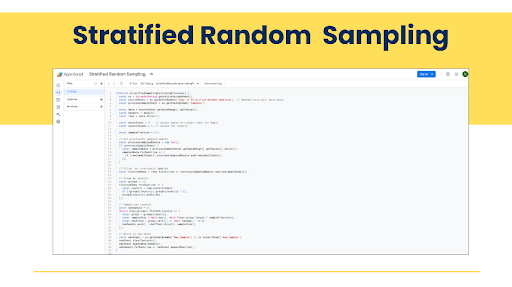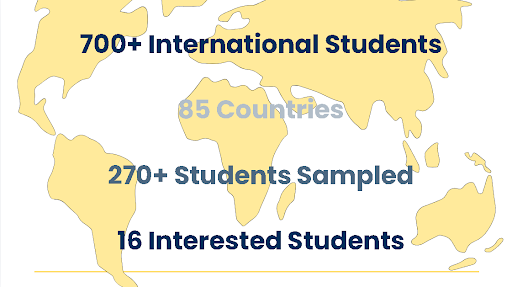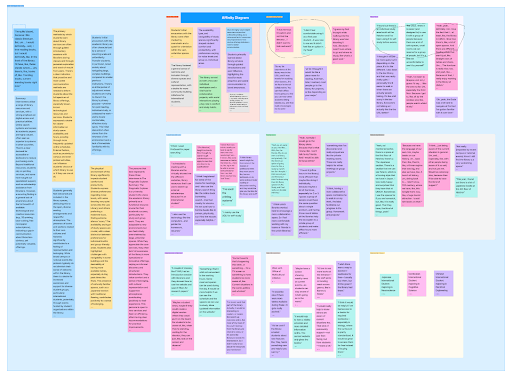I would like to begin by introducing myself. My name is Vivian, and I’m a rising senior at the University of Michigan studying Computer Science and Cognitive Science with a minor in UX Design. I immigrated to the U.S. from Vietnam when I was three, and as a first generation college student from a low income single parent background, much of my life has been about learning to navigate unfamiliar systems, often on my own. These experiences have shaped not only my perspective but also my values and the purpose I bring to the work I pursue. I care deeply about accessibility and inclusion, especially in spaces like education and public service, which can truly change lives when designed thoughtfully.
While I love studying computer science and building exploratory tech projects as a hobby, service and community have always been at the heart of what I do. From sponsoring girls’ education through my high school STF chapter to tutoring students around the world in their first time experience learning how to code, teaching English to an elderly Chinese community in Ann Arbor every Saturday, and collaborating with international high school math educators in my lab, I’ve always found joy in listening to people’s stories and helping amplify their voices, both locally and globally. That’s exactly what drew me to the Michigan Library Scholars Program. When I saw an outreach email about the project exploring first generation international students’ experiences with the U-M Library, I immediately felt a personal connection. I’ve been in those shoes—confused, overwhelmed, and unsure how to navigate systems not designed with me or underrepresented communities in mind. This project felt like a meaningful opportunity not just to develop new skills but to give back by helping surface stories like mine and build empathy into institutional spaces.
Project Overview

Our team explored the experiences of first generation international students with the U-M Library, as highlighted in the 2023 campus wide survey. While the survey offered valuable quantitative data, it lacked the personal depth and nuance needed to fully understand their challenges. To bridge this gap, we conducted qualitative interviews to uncover the stories behind the numbers and generate concrete, actionable insights for change.
We asked:
- How do these students interact with library spaces, services, and resources?
- What barriers or gaps do they face in trying to access them?
- How might the library better support and include them moving forward?
What I Did
Throughout the internship, I was given the opportunity to wear many hats: researcher, analyst, programmer, designer, and teammate. Much of the work was self directed, which meant I had a lot of ownership and autonomy in shaping the project’s direction, which I really valued and appreciated.
My main contributions included:
- Writing a stratified sampling script using Google Sheets and Google Apps Script to help identify a diverse participant pool
- Coordinating scheduling through Calendly and Qualtrics
- Co-designing and conducting in-depth interviews with my project team
- Analyzing qualitative data using grounded theory in Google Docs and Dedoose
- Creating visual artifacts like our affinity diagram and final presentation using Figma and Canva


One of the most rewarding parts of the process was seeing individual quotes come together into larger themes, especially while coding the transcripts and organizing the color coded sticky notes in the affinity diagram. It felt like assembling a jigsaw puzzle to reveal a fuller picture of what inclusion, or the lack of it, looks like on a lived level.

The People Who Made it Meaningful
As much as I grew from the work itself, the people I worked with made the experience even more meaningful.
I truly loved collaborating with my project teammates, Ayat Tolba and Najmul Ara Ritu. From working through assignments to checking in on one another and staying accountable, they made the summer internship feel vibrant, less overwhelming, and filled with encouragement. Our team dynamic was rooted in mutual respect, shared support, and genuine kindness.
I’m also incredibly grateful to our mentors, Craig Smith and Gabriel Duque, for their patient and thoughtful guidance. Whether they were helping me troubleshoot SPSS, navigate Dedoose, manage my time remotely, or connect with others across the library, their support kept me motivated and curious throughout the project.
Some of my favorite moments were the informal chats I had with people across the library—Anne, Sarah, Diana, Albert, Emma, and others—about their roles and career paths. Whether we talked about academic libraries, instructional design, or broader educational institutions, each conversation offered unique perspectives, encouragement, and a reminder that my path does not have to be linear to be meaningful.
What I Learned
This summer was full of learning—technical, professional, and personal. I deepened my skills in:
- Tools: SPSS, Dedoose, Figma
- Methods: Stratified sampling, grounded theory analysis, user centered design
- Communication: Engaging interviewing, collaborative writing, stakeholder presentations
More than anything, this experience gave me a real sense of confidence. Confidence in leading and managing a project, in how I contribute as a teammate, and in the value of my perspective. As an immigrant and first generation college student, I have often questioned whether my background belongs in certain spaces. This summer reminded me that it does not just belong, it adds depth and direction to the work.
Heading into my final year of undergrad, I am more certain than ever that I want to keep working where research, technology, and human centered design meet. I want to continue to help build tools and systems that reflect people’s realities, especially those whose voices are too often left out.
This was not just a summer project or a line on my resume. It is a clear reminder of what I am capable of and why this work matters to me.